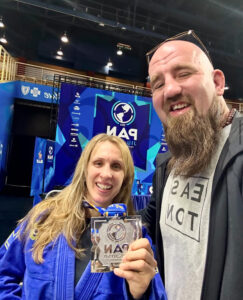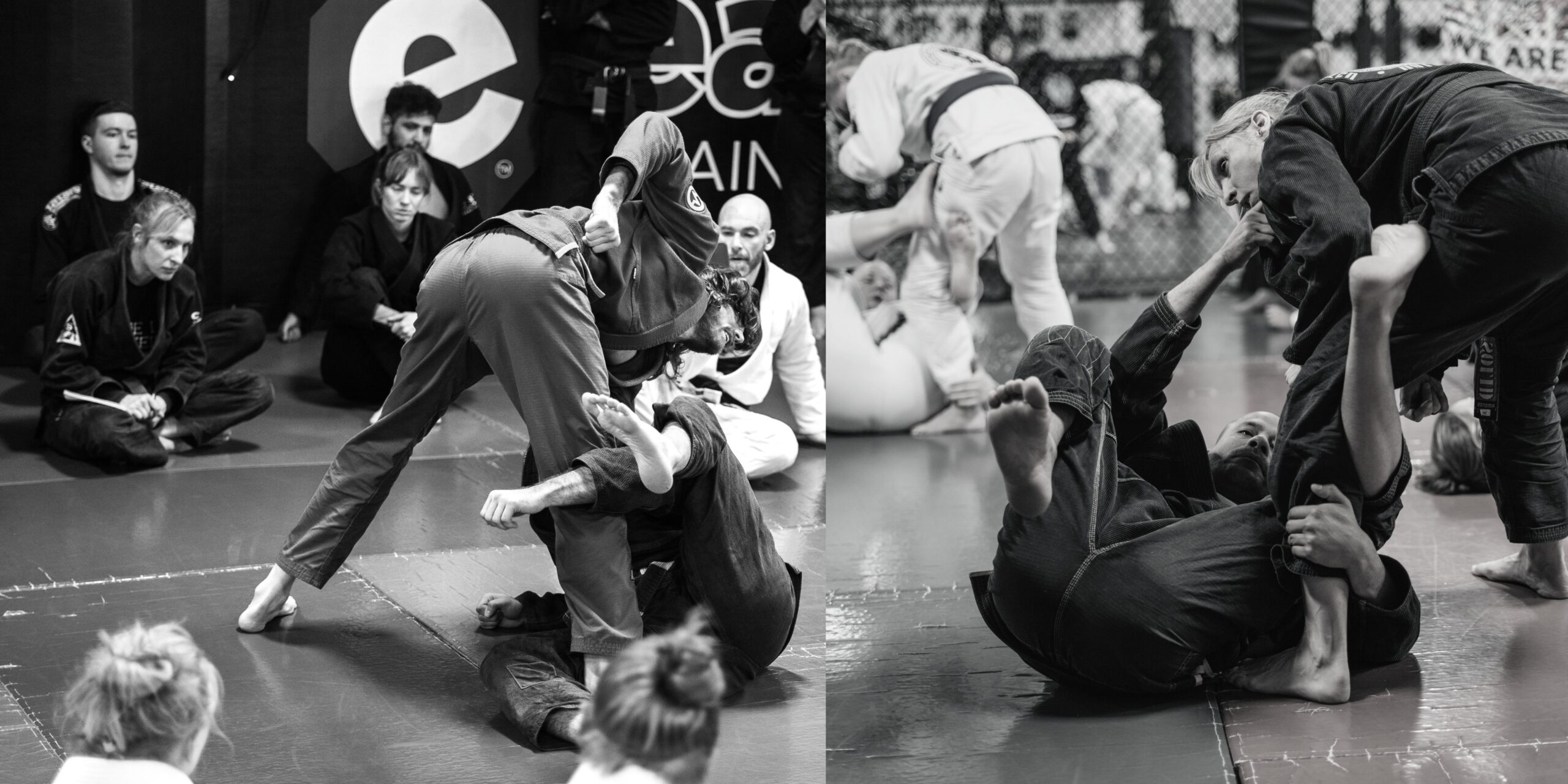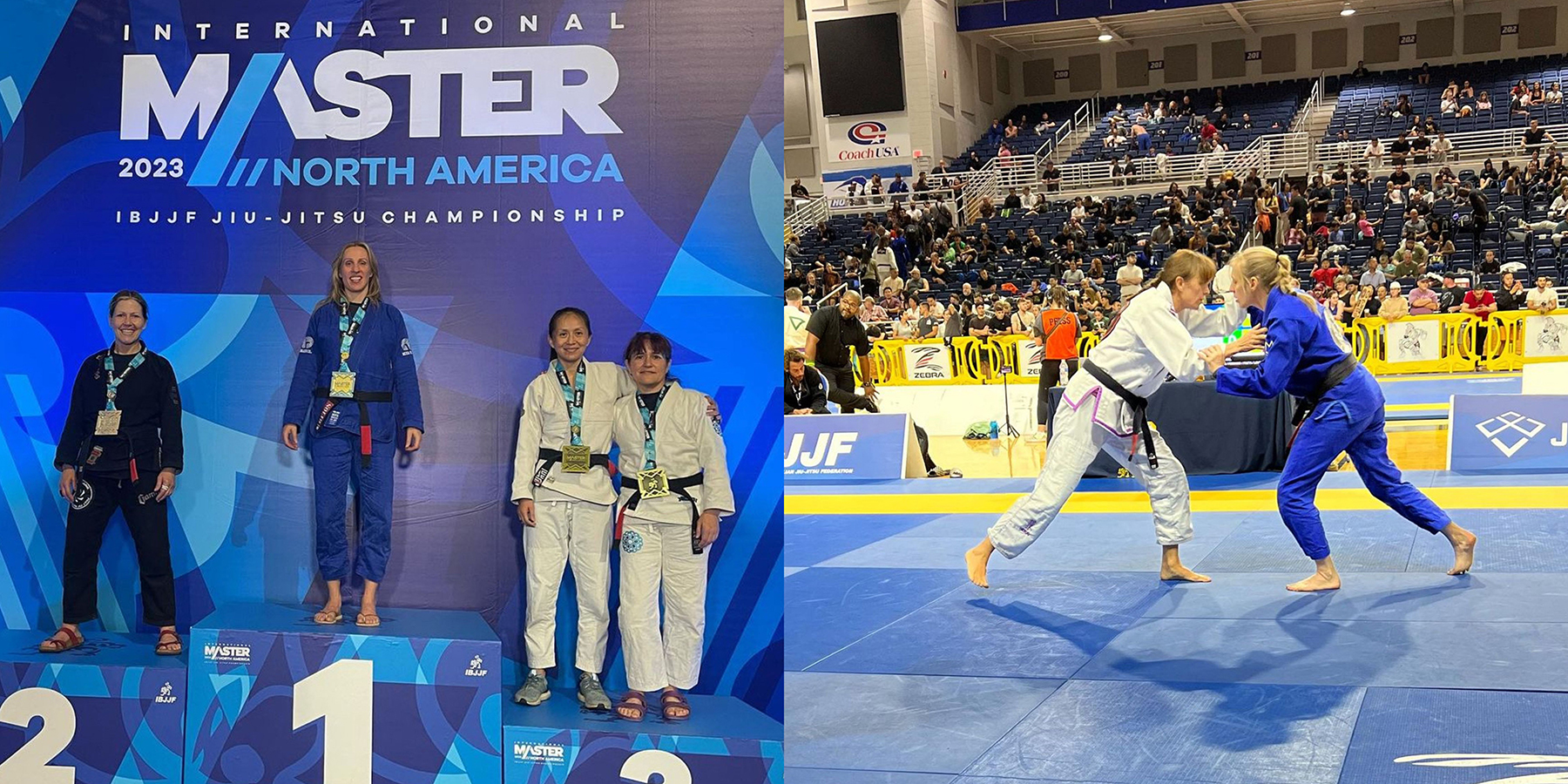On the latest episode of the Easton Community Podcast, Mike Tousignant sits down with Easton Black BJJ Belt, competitor, teacher and co-owner of Easton Lowry, Professor Amy Fidelis.
For the full lowdown – including Amy’s journey through the ranks, what she’s currently reading and more, listen to the podcast on Spotify or Apple Podcasts!
High-achiever hell

Everybody’s journey in martial arts looks different. Even the highest-level among us had to start somewhere, and those starts often have rocky roads themselves.
For competitor and multiple-time champion Amy Fidelis, we may think that Jiu Jitsu and competing came naturally, but what most people don’t see is everything that goes on behind the scenes. Amy, who co-owns Easton Lowry with Professor Junior, teaches a women’s class once a week and competes frequently alongside her full-time job in the government.
Over the course of her competition career, she’s won gold at IBJJF World Master as a Purple Belt, gold at Pans and Opens as a Brown Belt, and numerous gold medals at Black Belt with Pans, Master International, American Nationals and Opens, along with silver at Pans and bronze at World Master Absolute.
With nearly 15 years on the mats, Amy has had her Black Belt for nearly 3 of them. However, progress doesn’t always happen in a linear fashion, and Amy calls her own journey a roller coaster, a progression through ego, injury, and learning to be a good Jiu Jitsu student.
Amy expected that she’d be pretty good at Jiu Jitsu. Her dad trained Judo, BJJ and Kung Fu (among others) and she trained with him on occasion. Her mom also did martial arts; growing up, it was all around her.
She didn’t expect to feel so uncomfortable that she opted out for almost a year, trading in rolling for striking instead. It was 2008. Despite not feeling confident in Jiu Jitsu, Amy stayed with Easton and continued to train and grow with the community through Muay Thai.
At the time at Easton Denver, Junior Fidelis was a Jiu Jitsu coach. The two became friends, and he eventually convinced her to give Jiu Jitsu another chance. The rest is history – shown through Amy’s black belt, their nearly 14-year marriage and the school the two co-own together.

To Amy, the battle lies not just in the technical movements and mechanics of the sport. One of the biggest things Amy has had to overcome on the mats comes back to the fear and discomfort surrounding her situation – something many women can relate to.

The beauty of Jiu Jitsu rests in its reliance on technique and skill for a reversal in power dynamics – a smaller person can control a larger person through proper leverage, joint, and limb manipulation. Unfortunately, this also means that the inherent power struggle in the sport can create difficult barriers to overcome in its social dynamics alone.
No-gi in particular presented a big obstacle for her, since without the gi, many of the positions which can already feel vulnerable feel even more so in a rashguard and spats.
Amy, used to being a straight-A student, didn’t expect this particular struggle. When you get used to succeeding, you forget how to suck at something.
A lot of people will quit at this point, afraid of messing up or looking dumb. If you can reframe the feeling, though, you can let this drive you to work at it until you don’t suck anymore.
[Mindfulness and Mental Resilience in Martial Arts]

Facing fear head-on
That’s exactly what Amy did. She wanted to get those skills that would help her get through the terrible experience of feeling stuck, squished, weak or awkward. It’s coming back despite resistance (link) that’ll serve you far longer than sheer, natural talent.
Scared of no-gi? Let’s do no-gi, Amy said. Scared of competing? She signed up to compete.
“What am I actually afraid of?” Amy asked herself. “I was afraid of looking stupid or feeling stupid, and what is that??”
While Amy doesn’t think that everybody needs to compete in order to enjoy Jiu Jitsu, she believes that anyone genuinely interested in personal growth should try it at least once. Perhaps that’s why, despite the bundle of nerves that inevitably swim up each time, she continues to come back and put herself out there.
“I don’t love it,” says Amy, “I still don’t love it. I love what I learn from it, but every time it’s work.”

In many cases, the things we fear aren’t actually out to get us; they’re not dangerous to us. Instead, they seem hard and scary because they will actually yield the most reward. However, often, our brain still jumps in to keep us from getting hurt. After all, why waste all that energy just to get let down?
Despite the training and experience, this part hasn’t gotten any easier for Amy. She has, however, learned to deal with it better – calling her friend pre-comp, who reminds her that in this case, her brain’s like her drunk neighbor when it gets real loud – don’t listen to them.
The first, and hardest step, to allow yourself to fail is first to try. To try at something we find intimidating, but which poses no real threat, we must drop the ego and ask ourselves – what are we scared of? The hardest things are the most worth it.
For more on the topic, like when is quitting actually necessary and when is it just your brain tricking you to protect you, and why choosing the toughest choice yields the biggest results, listen to the full episode here!






